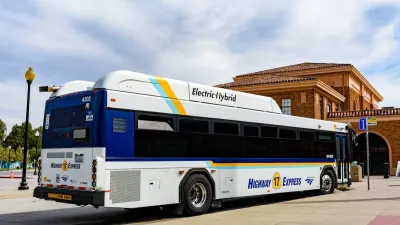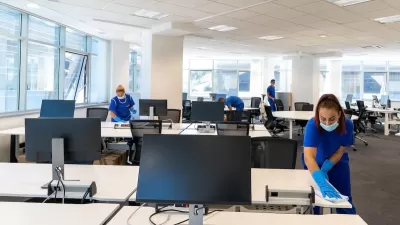Suburban growth in the DC area has been fueled by low gas prices and abundant freeways. Expensive gas has changed this growth paradigm as commuters shift to public transit and seek close-in homes. Will government respond to the change in the market?
"As more and more families reconsider their dreams, land-use experts are beginning to ask whether $4-a-gallon gas is enough to change the way Americans have thought for half a century about where they live. Since the end of World War II, government policy has funded and encouraged the suburban lifestyle, subsidizing highways while starving mass transit and keeping gas taxes much lower than in some other countries.
Local land-use policies kept housing densities low, pushing development to the periphery of metropolitan regions and forcing families who wanted their dream house to accept long commutes and a lack of any real transportation choices other than getting behind the wheel.
"There is a whole confluence of government policies...that have subsidized sprawl," said Bruce Katz, director of the Metropolitan Policy Program at the Brookings Institution.
But there's been a radical shift in recent months. Americans drove 9.6 billion fewer highway miles in May than a year earlier. In the Washington area and elsewhere, mass transit ridership is setting records. Last year, transit trips nationwide topped 10.3 billion, a 50-year high."
Thanks to Preston Schiller
FULL STORY: OIL SHOCK: Gas Prices Apply Brakes To Suburban Migration

Planetizen Federal Action Tracker
A weekly monitor of how Trump’s orders and actions are impacting planners and planning in America.

Maui's Vacation Rental Debate Turns Ugly
Verbal attacks, misinformation campaigns and fistfights plague a high-stakes debate to convert thousands of vacation rentals into long-term housing.

San Francisco Suspends Traffic Calming Amidst Record Deaths
Citing “a challenging fiscal landscape,” the city will cease the program on the heels of 42 traffic deaths, including 24 pedestrians.

Amtrak Rolls Out New Orleans to Alabama “Mardi Gras” Train
The new service will operate morning and evening departures between Mobile and New Orleans.

The Subversive Car-Free Guide to Trump's Great American Road Trip
Car-free ways to access Chicagoland’s best tourist attractions.

San Antonio and Austin are Fusing Into one Massive Megaregion
The region spanning the two central Texas cities is growing fast, posing challenges for local infrastructure and water supplies.
Urban Design for Planners 1: Software Tools
This six-course series explores essential urban design concepts using open source software and equips planners with the tools they need to participate fully in the urban design process.
Planning for Universal Design
Learn the tools for implementing Universal Design in planning regulations.
Heyer Gruel & Associates PA
JM Goldson LLC
Custer County Colorado
City of Camden Redevelopment Agency
City of Astoria
Transportation Research & Education Center (TREC) at Portland State University
Jefferson Parish Government
Camden Redevelopment Agency
City of Claremont





























